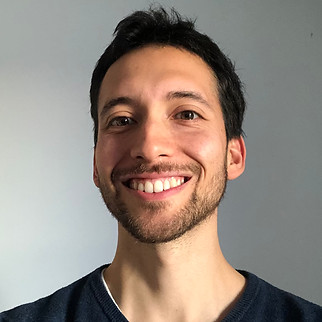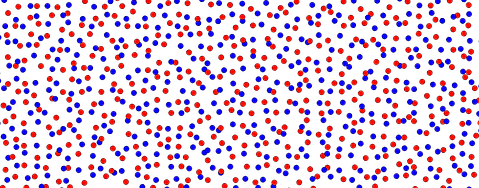
Welcome! I'm a postdoctoral researcher at the University of Pennsylvania working in Andrea Liu's group.
I combine theory and simulations to understand learning and adaptation in physical networks. I did my PhD. at the ENS de Lyon where I conceived and probed mechanical metamaterials with topological properties. Before this, I worked on the rheology of active matter and phase transitions in granular systems.

Research
Geometry and topology in chiral systems
What's the common denominator between a bead-and-spring system and a polyacetylene molecule?
Both posses a chiral symmetry.
Based solely on this overarching symmetry we introduce a new physical observable combining topology and geometry: the chiral polarization. It allows the unambiguous classification of distinct topological insulators and generalizes the good-old bulk-boundary correspondence. In collaboration with Coulais' lab, we have experimentally detected the chiral polarization in mechanical systems.

Chiral higher order topological insulators

A chiral polarized object can lead to localised zero-energy states in its surface. What would it take to localize a state in a corner? This is the subject of Higher Order Topological Insulators (HOTI).
As a natural extension of the chiral polarisation, we have defined quadrupolar and octupolar terms able to characterise zero-energy modes in lower dimensional regions. And what's more interesting, we can measure them! In collaboration with Coulais' lab, we have experimentally probed mechanical HOTIs, laying out design principles to engineer robust materials hosting topologically protected corner states.
Non-orientable order in frustrated metamaterials
Orientability is the topological property that distinguishes a cylinder from a Möbius strip. Despite the frantic popularity of topology in physics, non-orientability has remained unnoticed for good reasons: we cannot conceive non-orientable surfaces in 3D.
Instead of bending four, five or higher dimensions, we have experimentally and theoretically shown that classical systems with global frustration exhibit non-orientable order-parameter bundles, in the same way a Möbius strip does. This non-orientable order implies an extensive ground-state degeneracy which serves to engineer robust mechanical memory and achieve non-Abelian mechanical responses.

Criticality and dynamic hyperuniformity in vibrated granular matter

Vibrate a confined a bed of grains and you will get what resembles a fluid. Increase the frequency of vibration and the liquid will become a crystal. This simple experiment serves as a good platform to study out-of-equilibrium phase transitions. Combining experiments, theory and simulations we unveiled the intricacies of this phase transition. By tuning the confinement dimension we can crystallize the system in a first or second-order transition, both continuously connected through a tricritical point. This peculiar point further displays a dynamic hyperuniform state which we explained thanks to the coupling to a critical friction field.
Rheology of active systems
Take a glass of water, add some bacteria and measure the viscosity. Will you obtain a larger, smaller or the same water viscosity?
Using kinetic theory and Monte Carlo simulations we elucidate the effect of collective motion on the apparent viscosity of the fluid. Depending on the density of swimmers and their swimming mechanism, we explain both increase, decrease and also non-stationary states of oscillating viscosity. All these cases are well separated by phase transitions of different orders.





